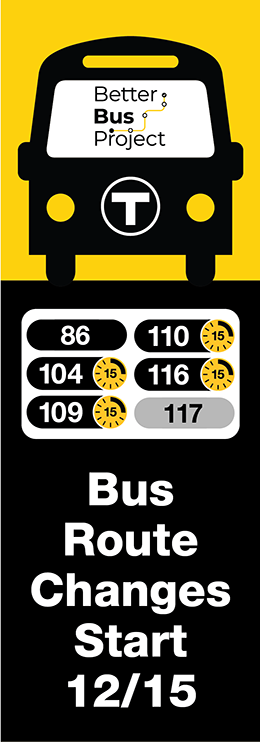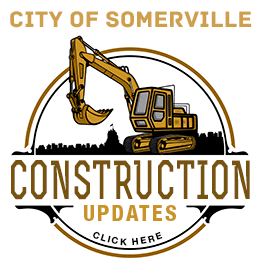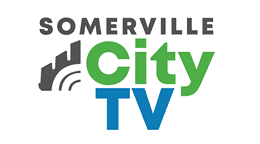Standing on a sun-baked sidewalk in Gilman Square, cars and trucks barreling by, one may have thought Danny LeBlanc, chief executive officer of the Somerville Community Corporation, chose an odd spot for a press conference. Yet LeBlanc, speaking to announce the release of two reports examining equitable and smart development strategies for East Somerville, insisted that the small group gathered before him look past where they stood today and think to the future of this, and many other Somerville neighborhoods.
“Imagine," said LeBlanc, nearly shouting over roaring traffic, "what this neighborhood will look like when the Green Line stops here."
Transit was the primary theme of Friday’s conference, as the SCC officially released a report it commissioned to examine transit-oriented growth strategies for the future development of east Somerville neighborhoods.
The report was prepared by Reconnecting America, an Oakland, CA based non-profit organization that delivers "impartial, fact-based perspective on transit-oriented development" for communities across America.
According to Sam Zimmerman-Bergman, a project director for Reconnecting America, 30 percent of Somerville’s population today lives within a half-mile of transit centers. With the extension of the Green Line and a proposed Orange Line stop in Assembly Square, that will jump to 85 percent of Somerville residents – an "incredible richness of transit," said Zimmerman-Bergman.
Though an exact location has not been officially determined, the state is committed to opening an East Somerville Green Line stop in 2014, said Monica Lamboy, director of strategic planning and community development for the city of Somerville, at Friday’s conference.
Somerville’s future wealth of transit will make it a highly desirable location to both live and work, particularly amongst today’s economic uncertainties. "People want to live close to their jobs," said Zimmerman-Bergman. "Places like Somerville are well positioned to weather the storm."
Among the findings in its report, Reconnecting America examined existing Somerville-area transit stations – Porter, Davis and Sullivan Square – to "see what lessons these stations can provide about the future." In the Porter and Davis Red Line station areas, both of which opened in 1986, it found median household incomes jumped by roughly 60 percent between 1990 and 2000, making them 21 percent higher than the citywide median. Today, according to Reconnecting America’s research, property values and rents around the Red Line are "higher than the rest of the city."
Yet, Reconnecting America’s report also found that such drastic increases in income and affordability were not consistent with the neighborhood surrounding the Orange Line’s Sullivan Square station, where incomes were approximately 18 percent lower than the citywide median in 2000. The report noted that this data "suggests that some equitable strategies appropriate for other parts of the city that have not experienced as much change may not be effective in the Red Line station areas," a theme repeated several times by LeBlanc at Friday’s conference.
"Not one size will fit all," said LeBlanc.
He also noted that the SCC has identified three major priorities in maintaining mixed-income communities in Somerville’s developing neighborhoods: leveraging new market rate housing, preserving existing opportunities in inclusionary zoning, and providing assistance to neighborhood businesses around developing transit areas.
Also released at Friday’s conference was a report on the SCC’s East Somerville Initiative, a broader set of visions for the development of East Somerville, born of the SCC’s desire to create a plan to "build and sustain without displacement."
The SCC set out on this task two years ago, said LeBlanc, organizing more than 350 people into three community summits. Eight large working groups were formed in the winter of 2007, to analyze issues such as jobs, schools and streetscape.
The final community summit was held in October 2007, forming an action plan with 27 goals towards equitable growth and progress in east Somerville. With the release of Friday’s report, SCC reported that 24 of the 27 established goals have made progress since October. The number one priority identified by the ESI, a Community Benefits Campaign led by the East Somerville Neighbors for Change, was partially
achieved with the creation of a local hiring agreement with Assembly Square’s IKEA store.
















Reader Comments